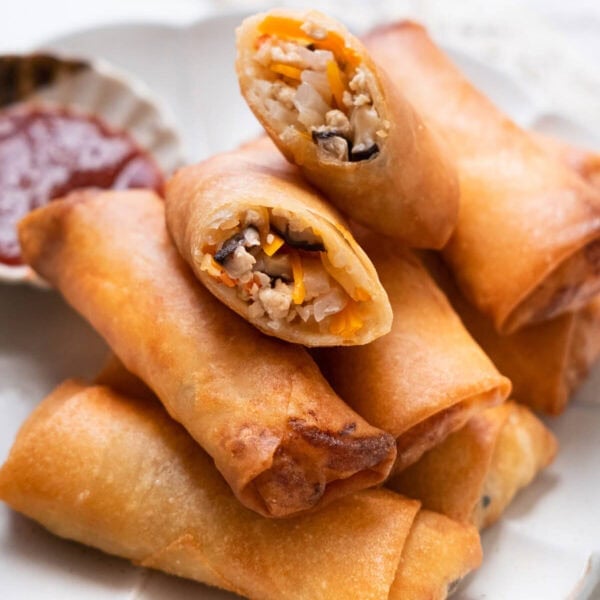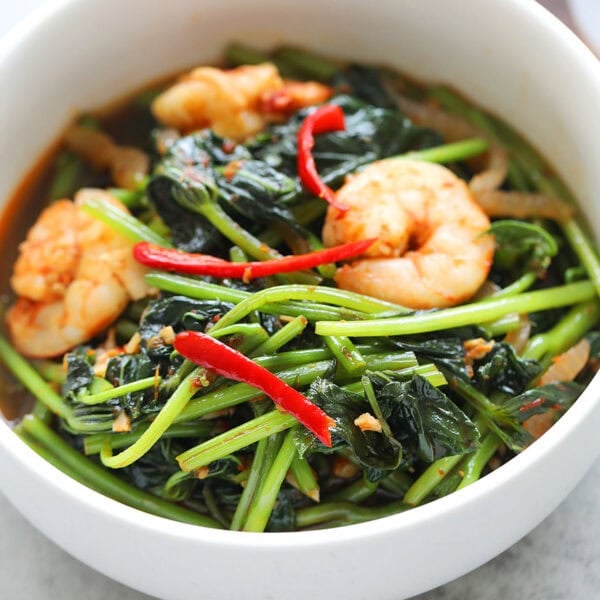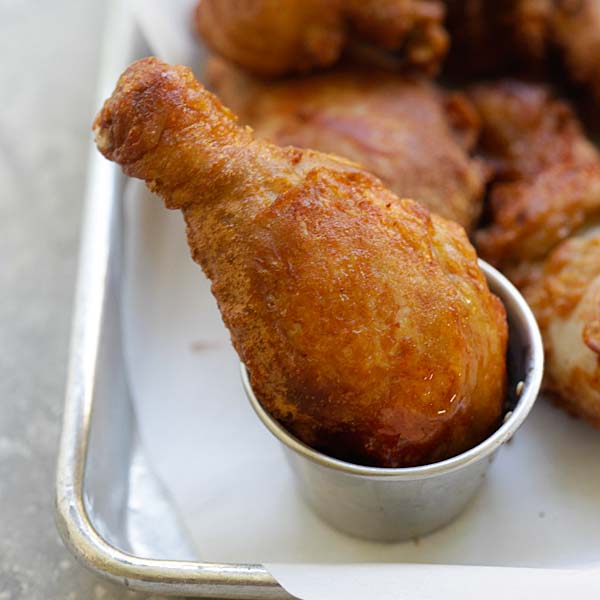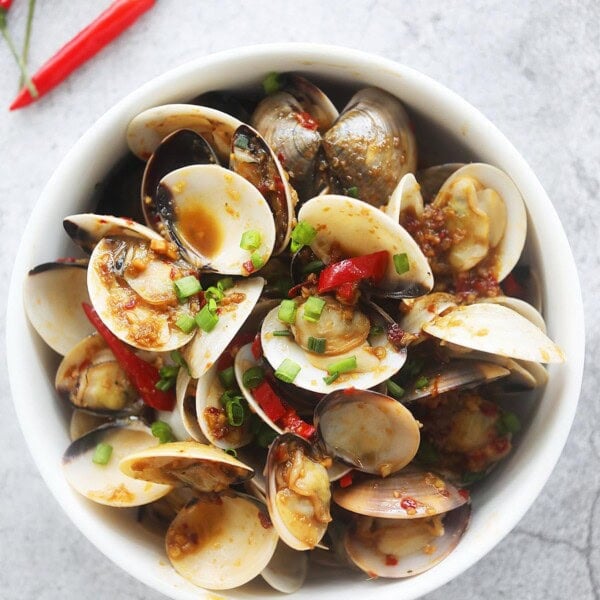This post may contain affiliate links. Please read my privacy policy.
Mee udang (Malay prawn noodles) is one of my all-time favorite Malaysian dishes, with juicy prawns, springy noodles, and a thick, flavorful gravy. I’m excited to share this simple recipe and tips to help you recreate the rich, comforting flavors of this classic dish at home.

Authentic Malay Prawn Noodle Recipe
Mee udang is one of my favorite Malaysian dishes, with a rich shrimp broth that’s both comforting and full of flavor. Made with yellow noodles and juicy prawns, it’s flavored with a tangy tomato gravy and a touch of sweetness. I’ve had it countless times at coastal “warungs” (small cafes) in Penang, where you can always find the freshest seafood.
When I make Penang mee udang at home, I love garnishing it with shredded lettuce, crispy fried shallots, and a squeeze of fresh calamansi lime—just like the ones I’d find in Penang! Unlike Penang Hokkien Mee (Chinese prawn noodles), this dish has its own distinct flavor and character that sets it apart.
I’m excited to share my easy mee udang recipe with you, a tasty Malaysian prawn noodle dish that’s ready in just 20 minutes! It’s filled with amazing flavors and is a must-try if you want to explore Malaysian food. Check out my tips below for making this dish just right!
Looking for more easy and delicious Malaysian noodle dishes? Check out my Wonton Noodles recipe!
Why This Recipe Is A Must-Try
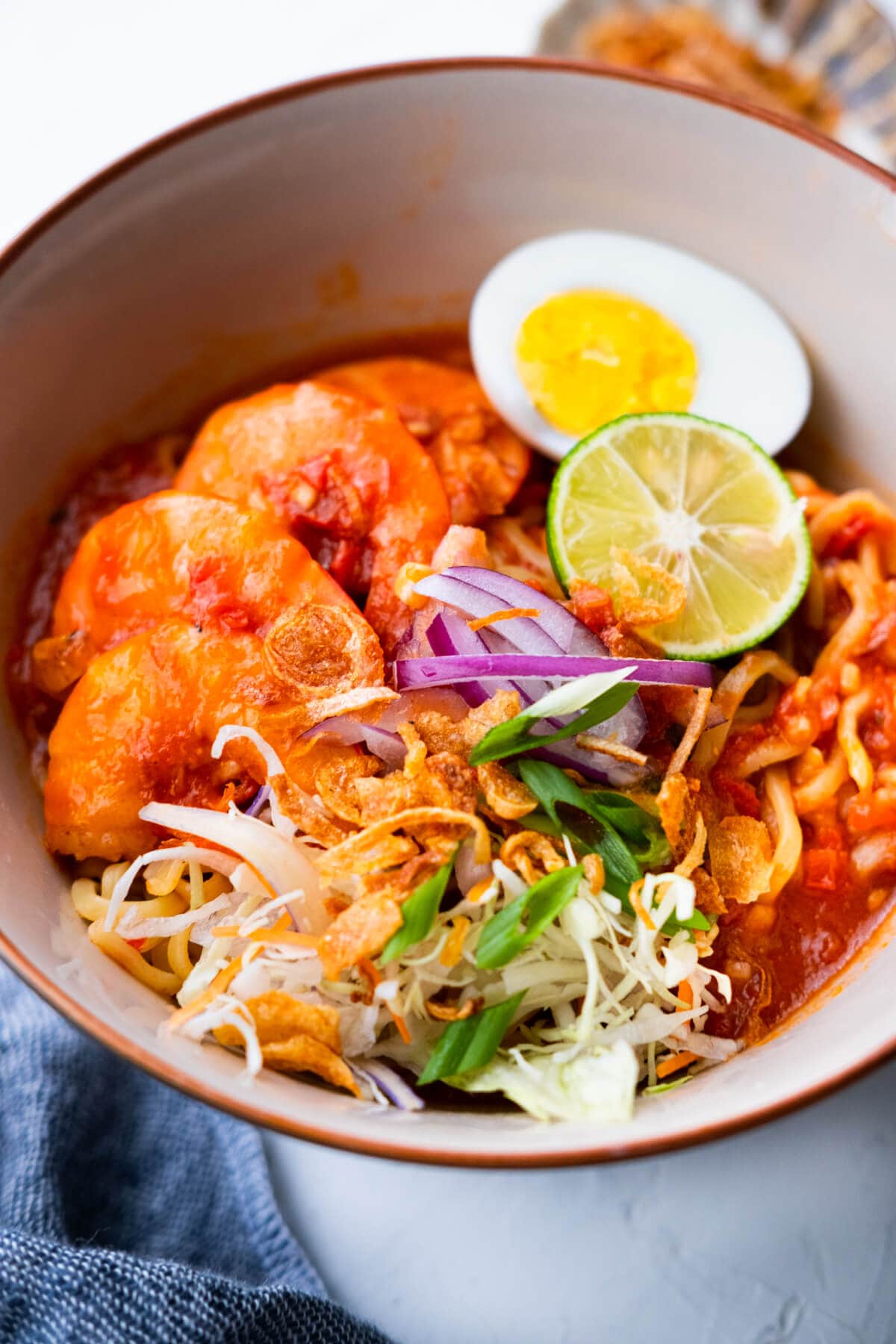
- In just 20 minutes. This recipe comes together quickly without compromising on taste, making it perfect for when I want something tasty but don’t have much time to cook.
- Authentic Malaysian flavor. With a rich shrimp broth, tangy tomato gravy, and juicy prawns, this dish tastes just like the ones I’d find at a coastal “warung” in Penang.
- Great for seafood lovers. If you love seafood, just like me, you’ll definitely enjoy this dish. The fresh prawns bring a natural sweetness that really makes the meal stand out and adds so much flavor.
- Flavorful gravy. The rich, tangy, and slightly sweet tomato gravy is absolutely irresistible! It ties everything together so perfectly, and it’s just that good—I always end up eating until the bowl is clean.
Ingredients You’ll Need
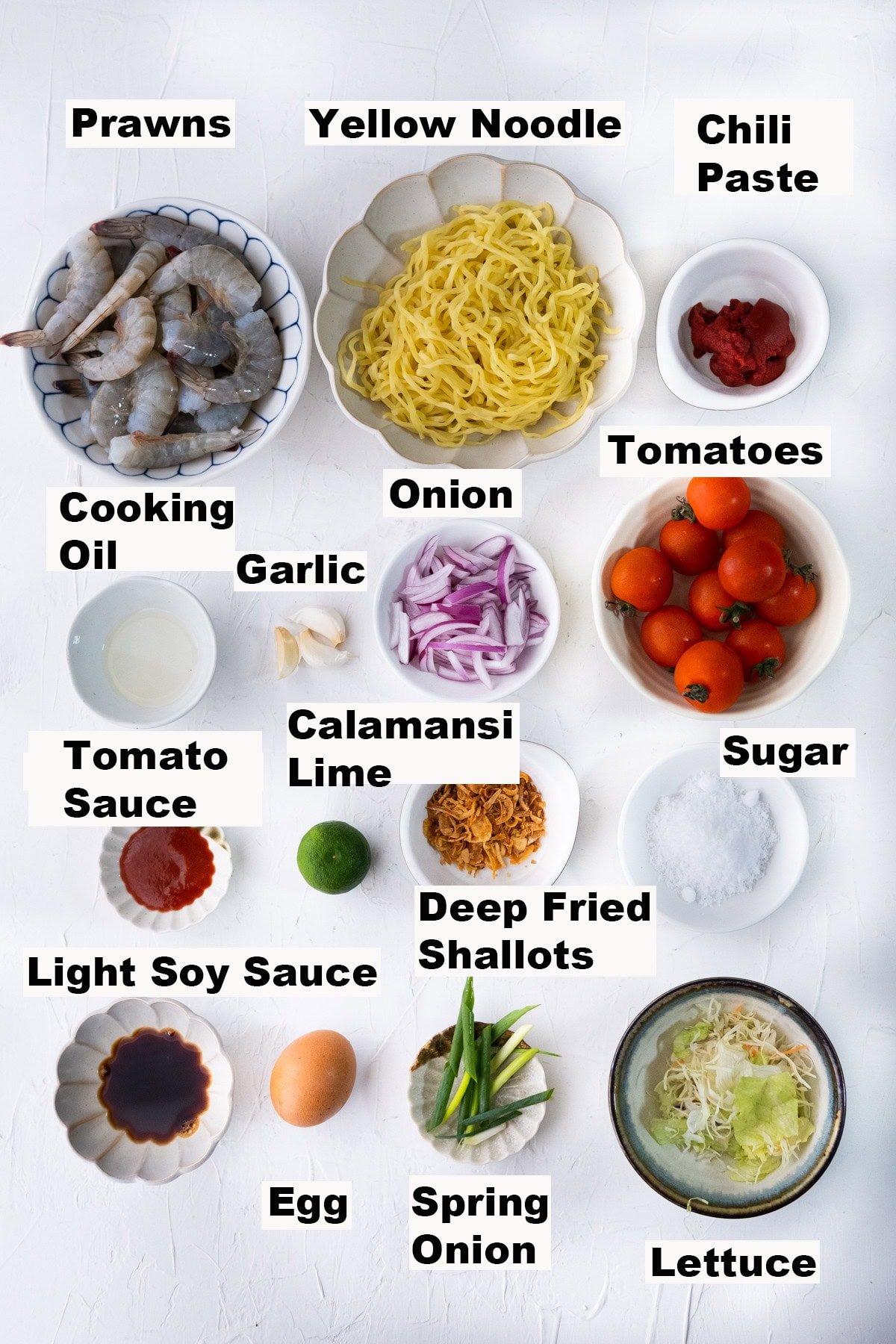
- Prawns – The star of the show. I used big-sized sea prawns because they’re perfect for their juicy texture and sweet flavor, but if you have medium-sized prawns or smaller shrimp on hand, they’ll work just as well!
- Yellow noodle – These yellow egg noodles are perfect for soaking up the flavorful gravy, adding a satisfying heartiness to every bite.
- Tomato sauce – Gives the gravy its iconic tangy and slightly sweet flavor.
- Tomatoes – Add a fresh, tangy kick to the gravy. You can use regular round tomatoes or Roma tomatoes.
- Garlic
- Chili paste – Adds a spicy kick.
- Sugar
- Oil
- Water
- Light soy sauce
Garnishes
- Egg
- Spring onion
- Onion
- Lettuce – I used Iceberg lettuce, but you can totally use Romaine lettuce if you prefer.
- Deep fried shallots – Add a super crispy, savory crunch and give the dish an extra boost of flavor and texture as a garnish!
- Calamansi lime – A squeeze of this little lime adds a burst of citrusy freshness, really brightening up the dish and making all the flavors pop.
Please refer to the recipe card at the bottom of this post for full details on each ingredient.
How To Make Mee Udang
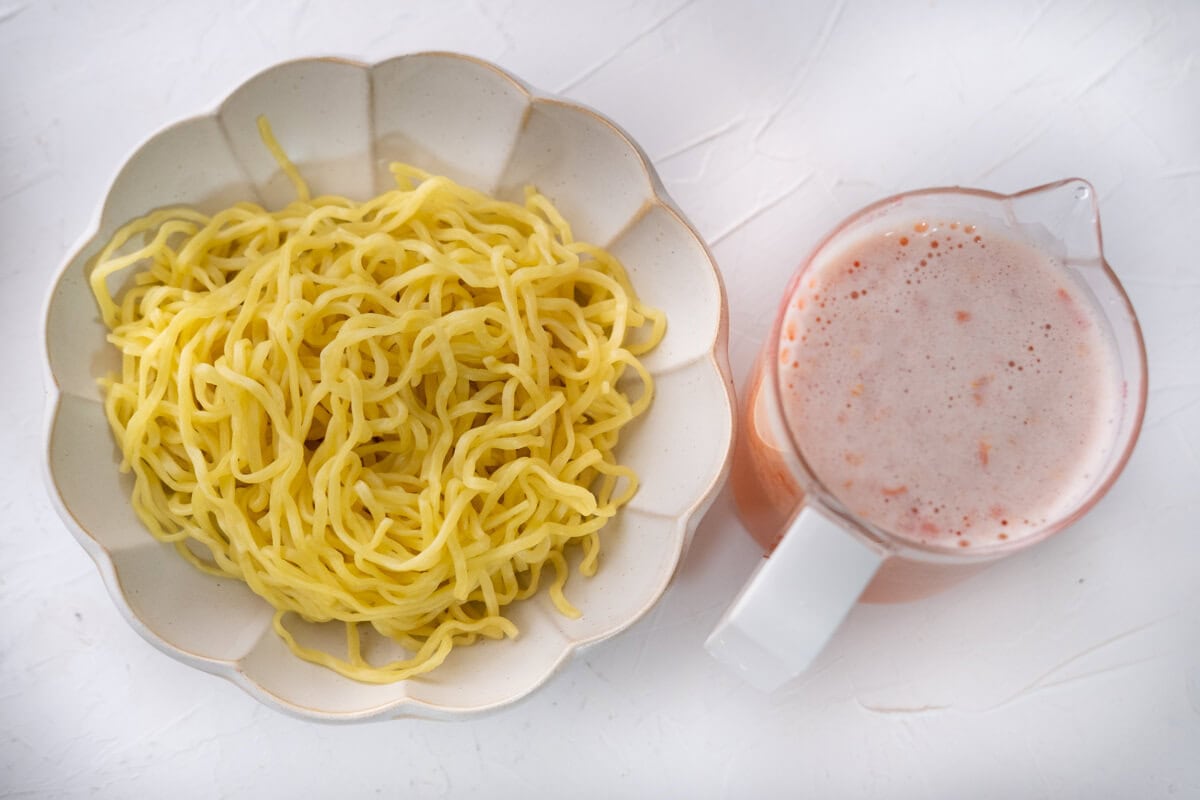
Step 1: Blend the diced tomatoes with 400 ml (13 oz.) of water and set aside. Blanch the yellow noodles and set aside.
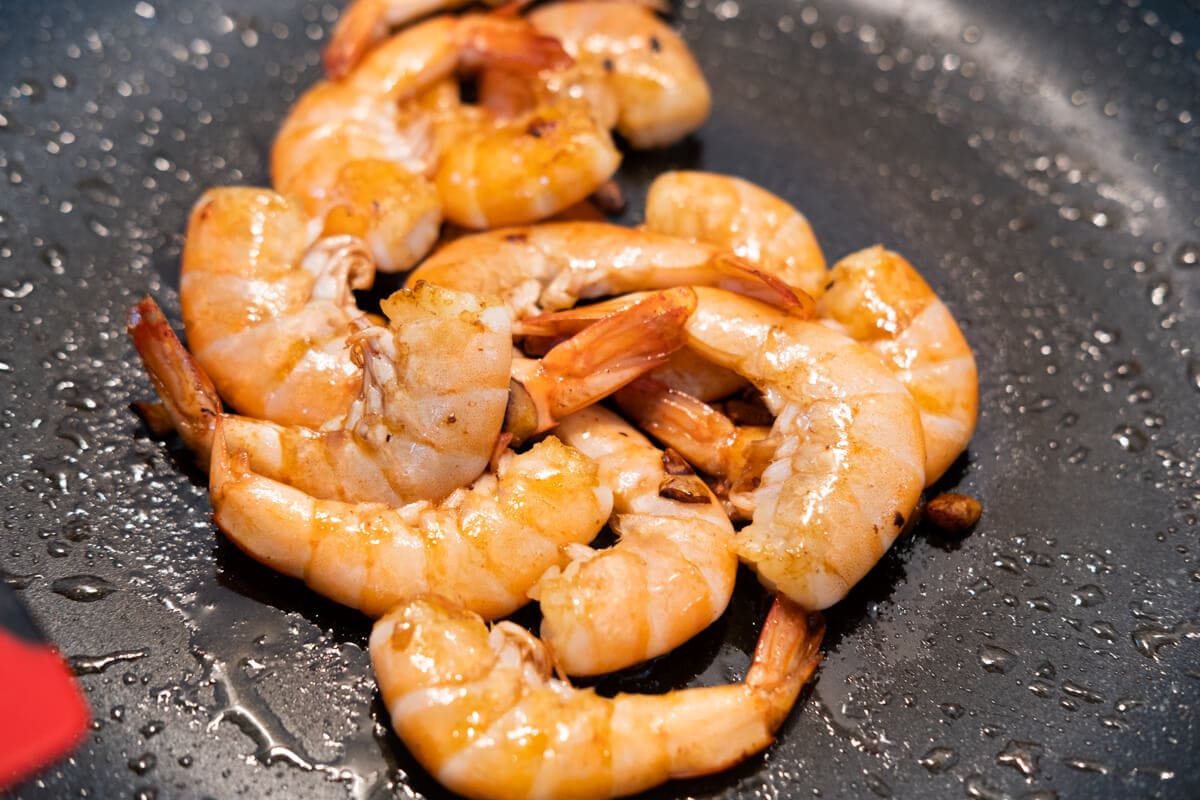
Step 2: Leave about 2 tablespoons of oil in the wok and sauté the garlic until fragrant. Add the prawns and stir-fry with 1 tablespoon of light soy sauce for 1 minute.
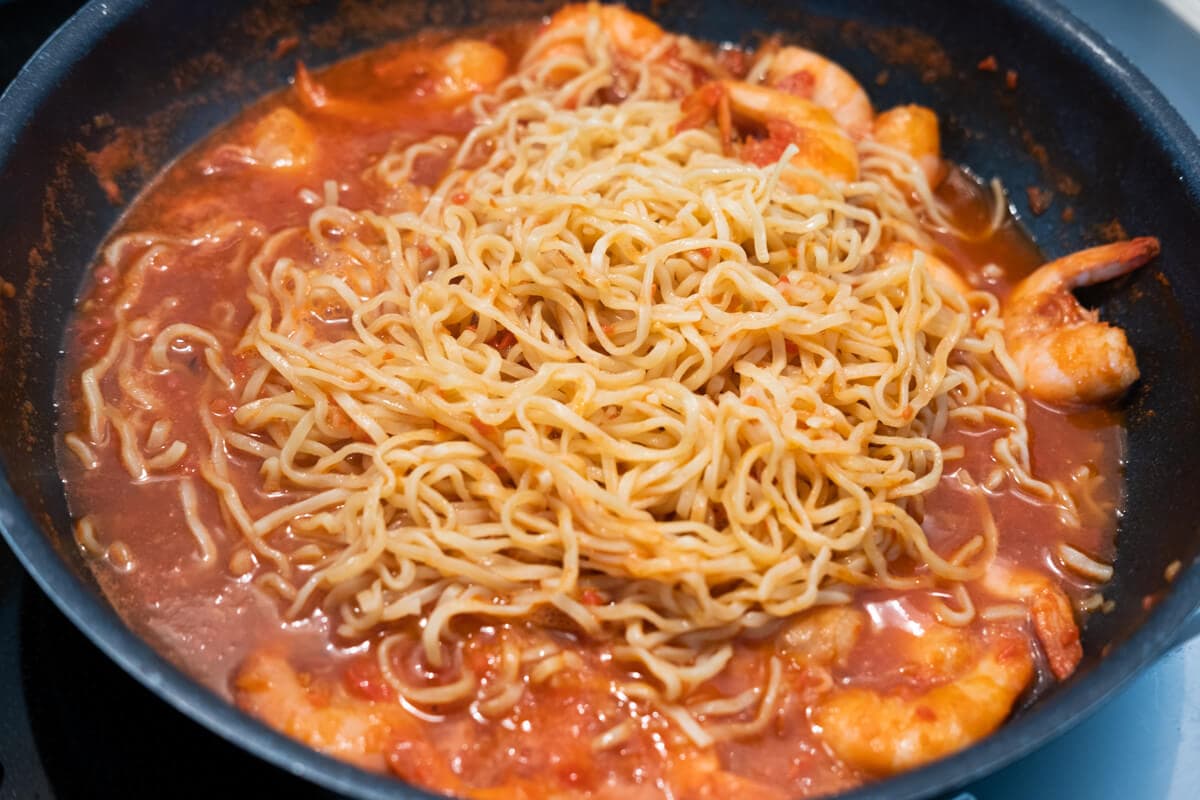
Step 3: Pour in the tomato puree, then add the tomato sauce and chili paste. Bring the gravy to a simmer over medium heat. Add sugar and light soy sauce to taste. Then add the yellow noodles to the simmering gravy and mix well.
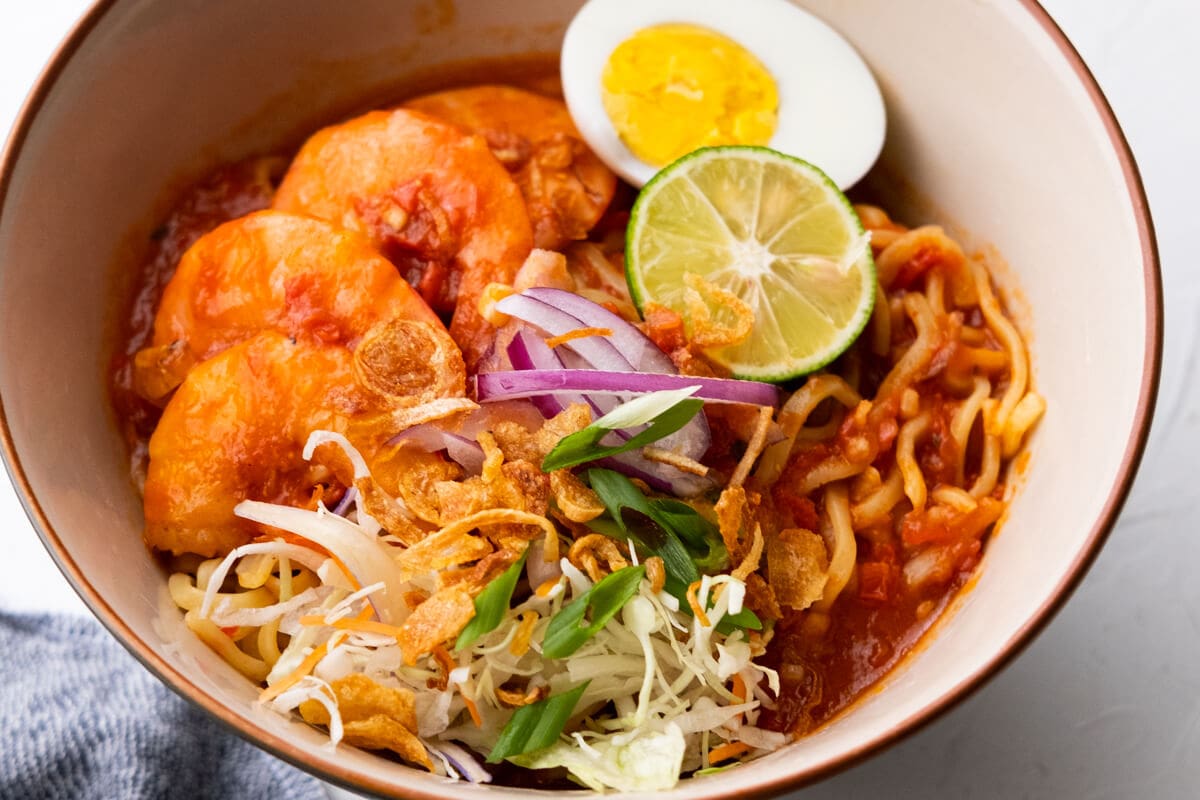
Step 4: Serve and garnish with onion, spring onion, egg, lettuce, calamansi lime, and fried shallots.
Secrets To Making Authentic Mee Udang
- The prawns are the star of this dish. I always choose fresh, juicy prawns because they bring the natural sweetness and rich flavor that make the dish so special.
- The gravy is key, so I make sure to use light soy sauce for that umami flavor and chili paste to add the right amount of spice. I let the gravy simmer to bring out all the deep, savory flavors.
- The gravy should be thick but still a bit soupy. After blanching the noodles separately, I add them to the gravy so they can soak up all the rich flavors.
- I never skip the garnishes. I love garnishing my mee udang with fried shallots for a crispy crunch, calamansi lime for a fresh citrusy kick, and spring onions for some sharpness. A hard-boiled egg adds richness, and lettuce gives a nice, refreshing crunch.
Frequently Asked Questions
Fresh prawns are best for the best taste, but frozen prawns will do if you’re in a pinch. Just make sure to thaw them properly and drain any extra water before cooking to keep the gravy from getting watery.
While yellow noodles are the traditional choice for this dish, you can use other noodles like egg noodles. Just keep in mind that the texture may differ.
Yes! You can make the gravy ahead of time and keep it in the fridge for up to 2 days. When you’re ready to serve, just reheat it and toss in freshly cooked noodles and prawns.
Yes! If you like it extra spicy, simply increase the amount of chili paste.
If you can’t find calamansi lime, you can use key lime or regular lime instead. The flavor won’t be exactly the same, but it’ll still give the dish that needed tang and citrusy kick.
Keep the noodles and gravy in separate airtight containers to keep the texture right. The noodles can get soggy if left in the gravy. When you’re ready to heat it up, just add a little water to loosen the gravy if it’s gotten too thick.
This mee udang recipe is 995 calories per serving.
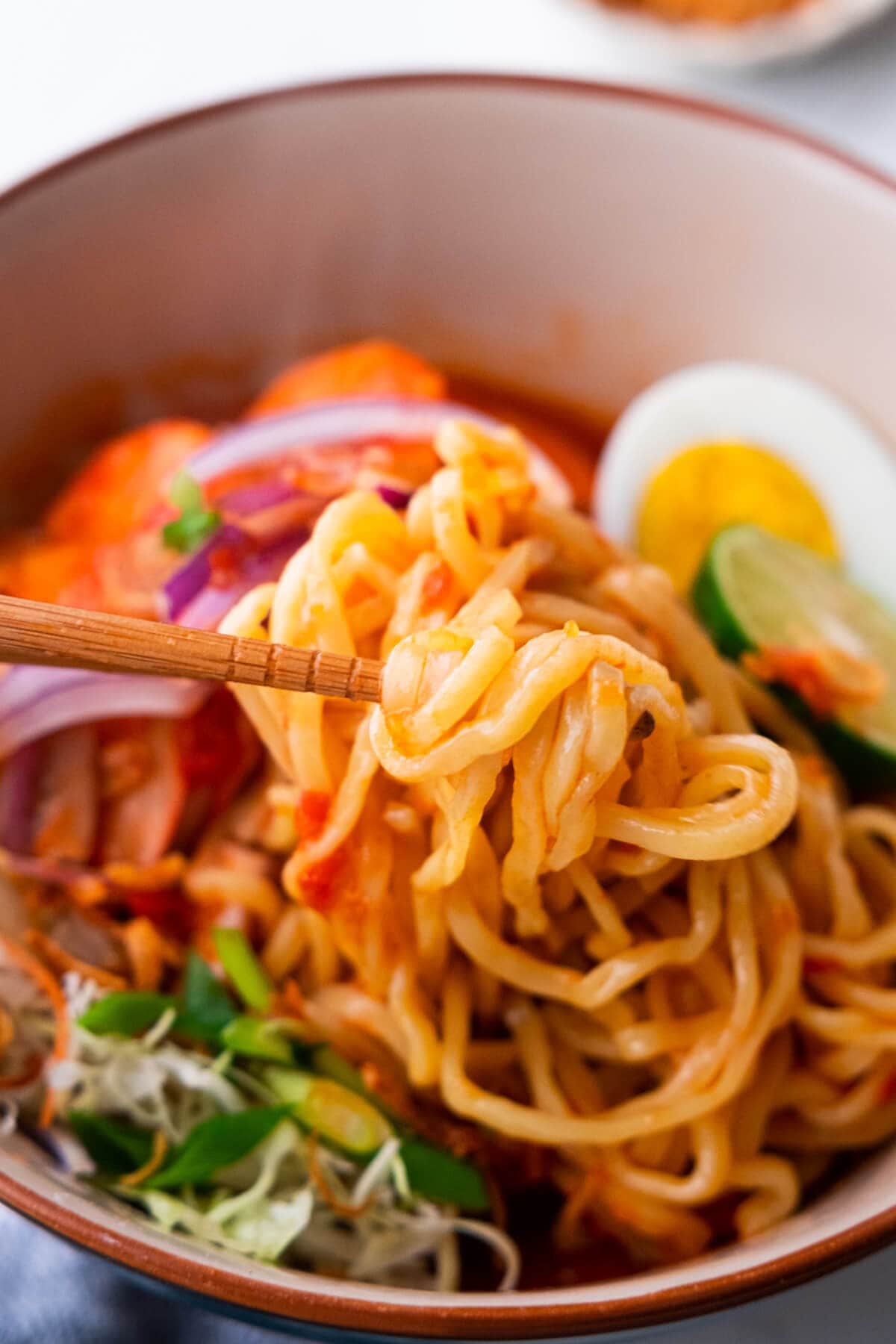
What To Serve With Malay Prawn Noodle
For a wholesome meal and easy weeknight dinner, I recommend the following recipes.
I hope you enjoy this post as much as I do. If you try my recipe, please leave a comment and consider giving it a 5-star rating. For more easy and delicious recipes, explore my Recipe Index, and stay updated by subscribing to my newsletter and following me on Facebook, Pinterest, and Instagram for new updates.
Other Malaysian Recipes You Might Like

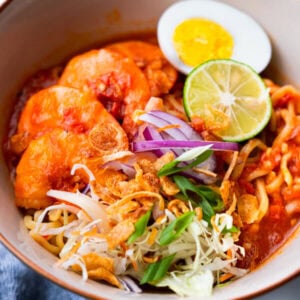
Mee Udang
Ingredients
- 200 g (7 oz) tomatoes, diced
- 400 ml water
- 250 g (8oz) yellow noodle
- cooking oil
- 4 cloves garlic, peeled and chopped
- 600 g (20 oz) big-sized sea prawns, I got 8 big prawns
- light soy sauce, to taste
- 5 tablespoons tomato sauce
- 1 ½ tablespoons chili paste
- 2 tablespoons sugar
Garnishing:
- 1/4 onion, thinly sliced
- 1 stalk spring onion, chopped
- 2 eggs, hard-boiled, peeled and halved
- 3 leaves lettuce, thinly sliced
- 2 calamansi lime, halved
- fried crispy shallot
Instructions
- Blend the diced tomatoes with 400 ml (13 oz.) of water and set aside. Blanch the yellow noodles and set aside.
- Leave about 2 tablespoons of oil in the wok and sauté the garlic until fragrant. Add the prawns and stir-fry with 1 tablespoon of light soy sauce for 1 minute.
- Pour in the tomato puree, then add the tomato sauce and chili paste. Bring the gravy to a simmer over medium heat. Add sugar and light soy sauce to taste. Then add the yellow noodles to the simmering gravy and mix well.
- Serve and garnish with onion, spring onion, egg, lettuce, calamansi lime, and fried shallots.
Notes
- The prawns are the star of this dish. I always choose fresh, juicy prawns because they bring the natural sweetness and rich flavor that make the dish so special.
- The gravy is key, so I make sure to use light soy sauce for that umami flavor and chili paste to add the right amount of spice. I let the gravy simmer to bring out all the deep, savory flavors.
- The gravy should be thick but still a bit soupy. After blanching the noodles separately, I add them to the gravy so they can soak up all the rich flavors.
- I never skip the garnishes. I love garnishing my mee udang with fried shallots for a crispy crunch, calamansi lime for a fresh citrusy kick, and spring onions for some sharpness. A hard-boiled egg adds richness, and lettuce gives a nice, refreshing crunch.
Nutrition
Nutrition information is automatically calculated, so should only be used as an approximation.
